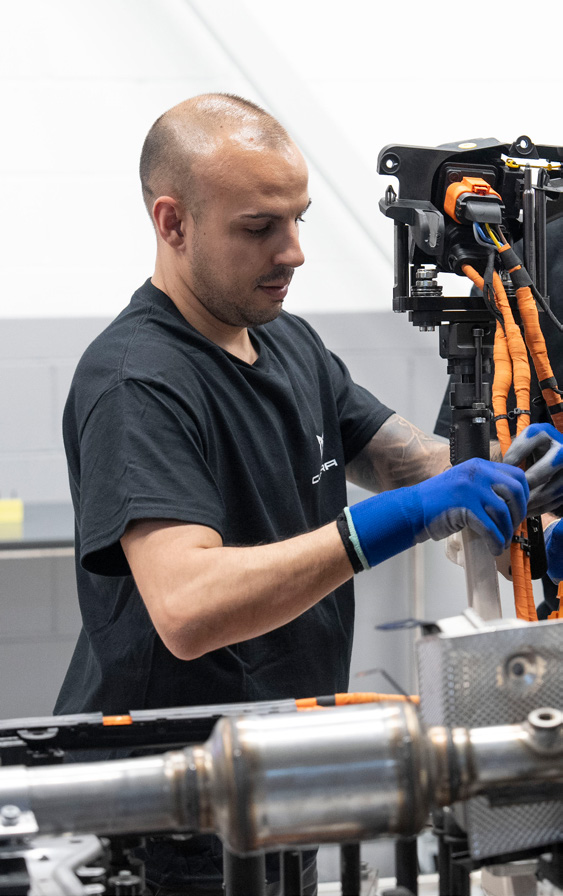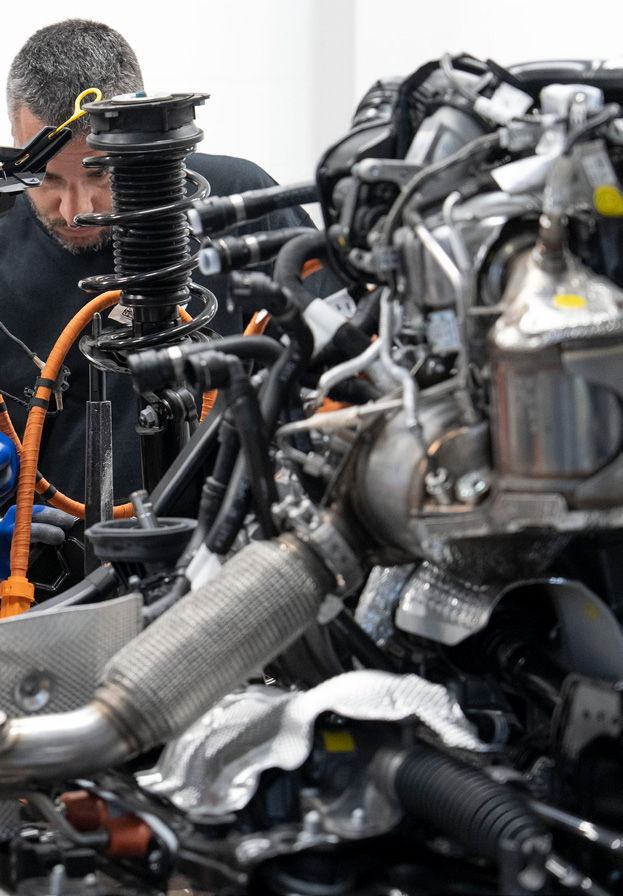
THE MANUFACTURING INTERVIEW
“We want to do more than just comply with rules; we want to go beyond and set our mark”
MARKUS HAUPT,EVP FOR PRODUCTION AND LOGISTICS, SEAT
operations,” he says. “But, as a manufacturer, we want to do more than just comply with rules; we want to go beyond and set our mark in terms of social responsibility within society.”
But there’s no room for complacency. Record results bring record production pressures and Markus says the key to navigating this whilst increasing future competitiveness is investing in smart manufacturing technologies.
This investment is especially prominent at the company’s Martorell factory, where innovation is shaping the future of the company’s newest models including the Leon and Formentor.
SEAT is doing exactly that with its EV leadership, setting new records in terms of both social responsibility, sales and corporate growth.
“It’s key to my role to maintain the competitiveness of our factories in the group,” Markus says. “We know that our biggest allies or tools are emerging digital technologies. This is the main lever we have to increase our competitiveness.”
The link between growth, competitiveness and technology SEAT enjoyed its biggest year in terms of financial results in 2024. Despite the challenges plaguing automotive industry last year, it also secured an impressive 75% growth in sales.
This is evident in SEAT Zero Defect Vision project, a combined virtual reality and AI project that is being utilised in the manufacturer’s facilities to detect problems or defects.
46
May 2025
HOW THE SEAT 600 PUT SPAIN ON WHEELS
Take a seat for one of the most pivotal stories in automotive history : the motorisation of Spain .
After the end of the Spanish Civil War in 1939 , Spain was in dire economic straits . The nationalists had won , leading to the Franco regime – a dictatorship that lasted until 1975 .
The regime created several industries to develop Spain , investing extensively in the nation ’ s automotive sector . From this , SEAT – which stands for Sociedad Española de Automóviles de Turismo – was born . SEAT would come to play a major role in the exceptional economic growth of Spain from 1956-1974 in which GDP averaged 6.5 % growth rate year on year ; a period which today has earned the moniker of the ‘ Spanish Miracle ’.
The project seeks to create a full end-to-end process for the whole construction process of vehicles, identifying defects and autocorrecting them without human intervention. This process, which occurs on a dedicated station, has since been extended to the assembly shop.
In the late 1950s , SEAT started using designs by FIAT under their licence , assembling them in Spain . From 1957 , a whopping 797,319 SEAT 600s and 18,200 SEAT 800s would be manufactured at its Zona Franca factory in Barcelona .
“Having digital twins or having AVASIM is helping our internal processes become faster and more competitive,” adds Markus. “VR also helps a lot with bringing a car to a series. It’s a huge job with many departments enrolled.
The process created a wealth of new manufacturing jobs and enabled many Spanish families to have their first car thanks to their inexpensive prices which hovered around 65,000 Pesetas ( US $ 415.20 ) without tax .
“Using VR makes everything faster so that we can optimise our products. Once we launch the product, it’s already in a much
From 1958 to 1966 , the SEAT 600s was the best selling car in Spain , creating a legacy that ensured the automaker far outlasted its origins .